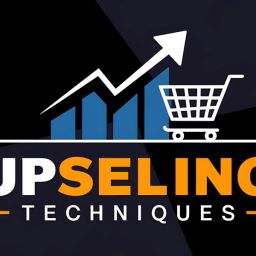
Boat inventory doesn’t always move as quickly as expected—especially in regions with distinct boating seasons or during slow economic periods. When units sit on your lot or showroom floor for too long, they tie up capital, take up space, and risk further depreciation due to age or exposure. The key is to implement a strategic plan and use the right digital tools to re-engage buyers and move aged boats before they impact your bottom line.
Why Boats Become Aged Inventory
Understanding why a boat hasn’t sold is the first step to developing a strong strategy. Common causes include:
Misaligned Pricing: The boat may be priced above similar listings or newer models with upgraded features.
Seasonal or Regional Demand: Some styles—like pontoons, jet boats, or offshore fishing vessels—may appeal more strongly in certain regions or during certain months.
Condition Concerns: Even if the boat performs well, cosmetic issues or missing maintenance documentation can deter buyers.
Lack of Exposure: If the listing didn’t include strong photos, video, or wasn’t widely promoted, it may not have reached serious buyers.
Once you’ve identified the reason, you can reframe your approach to better position the unit for a sale.
A Timeline to Move Aging Marine Inventory
Following a time-based plan helps ensure you’re staying proactive instead of reactive. Here’s how to manage aged inventory across its lifecycle:
Day 1–30: Maximize Visibility from the Start
When a unit first hits your lot, your goal is to get it in front of as many potential buyers as possible.
-
Prime Display Location: Position the boat prominently on your lot or in your showroom.
-
Strong Listings: Post detailed listings with high-quality photos, specs, and compelling descriptions on Boatmart.
-
Premium or Featured Ads: Use ad enhancements early to attract attention while the boat still has high perceived value.
-
Detail and Prep: Thoroughly clean and inspect the unit—presentation matters, especially with higher-ticket items.
Day 31–60: Refresh and Re-Energize
If the boat hasn’t sold within a month or two, it’s time to refresh your strategy.
-
Change Placement: Move the unit to a new location on your lot or rotate it into a more visible showroom spot.
-
Update Listing Content: Add new photos or videos and adjust the description to refocus on key value points.
-
Re-evaluate Pricing: Compare with similar units in your region—small reductions can have a big impact.
-
Team Incentives: Offer your sales team a commission boost or bonus for moving aging inventory.
Day 61–90: Final Push or Exit Plan
At this stage, your goal is to reduce holding costs and open space for faster-turning models.
-
Feature the Unit: Highlight it on your homepage, emails, and in-store signage.
-
Offer Time-Limited Deals: Incentivize buyers with short-term offers like discounted pricing, free winterization, or waived delivery fees.
-
Wholesale or Consignment: If needed, consider moving the unit through wholesale channels or consignment to recoup costs and make room for new inventory.
Social media can also help generate attention—consider posting on Facebook, Instagram, or YouTube with urgent messages like, “$1,000 Off This Weekend Only” or “Free Boat Cover With Purchase This Week.” These types of posts can drive fast action from local shoppers.
How Boatmart Can Support Your Strategy
Boatmart offers targeted digital tools designed to move inventory:
-
Enhanced Ads: Places your chosen boats at the top of relevant buyer search results for increased visibility.
-
Enhancement Auto Selector: Automatically assigns available ad upgrades to your most at-risk inventory, using criteria like age, price, or type.
-
TraderTraxx Analytics: Monitor performance, including views and leads, and pivot your strategy when engagement drops.
Don’t let aged boats drag down your dealership’s momentum. With a time-based inventory strategy and digital marketing support from Boatmart, you can keep sales moving, reduce carrying costs, and make room for your most in-demand units.







